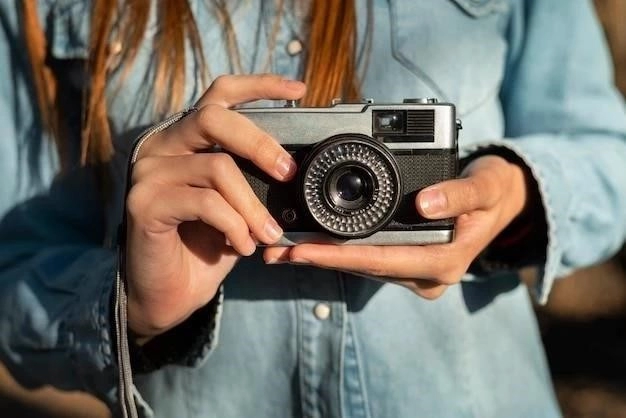The History of Photography: Capturing Moments in Time
Photography, a word derived from the Greek words “phos” (light) and “graphein” (to draw), translates to “drawing with light.” It’s an art form, a scientific tool, and a powerful medium for communication that has revolutionized how we see and interact with the world. This article delves into the fascinating history of photography, tracing its evolution from the earliest attempts to capture images to the sophisticated digital technology we have today.

Early Beginnings: The Camera Obscura and Light-Sensitive Materials
The history of photography predates the actual capture of images. Long before the first photograph, the principles of optics and light were being explored. One crucial invention was the camera obscura, a darkened chamber with a small hole or lens that projected an inverted image of the outside world onto the opposite wall. This device, dating back to ancient civilizations, served as a tool for artists and scientists for centuries.
Equally important was the discovery of light-sensitive materials. In the early 18th century, Johann Heinrich Schulze demonstrated that silver salts darkened when exposed to light. This discovery, although not immediately applied to photography, would later prove fundamental.
The Birth of Photography: Niépce and Daguerre
The year 1826 marks a pivotal moment in history ౼ the creation of the first permanent photograph. Joseph Nicéphore Niépce٫ a French inventor٫ successfully captured “View from the Window at Le Gras” using a technique he called heliography. It involved exposing a pewter plate coated with bitumen to light for several hours.
Niépce’s work was further developed by Louis-Jacques-Mandé Daguerre, who partnered with Niépce shortly before his death. In 1839٫ Daguerre announced the invention of the daguerreotype٫ a process that produced highly detailed images on silver-plated copper plates; This invention sparked widespread excitement and marked the official birth of photography as we know it.
Advancements and Innovations: From Calotypes to Collodion
While the daguerreotype gained popularity, other inventors and scientists continued to explore alternative photographic processes. In 1841, British scientist William Henry Fox Talbot patented the calotype process, also known as the talbotype. Unlike the daguerreotype, which produced a unique image, the calotype used paper negatives to create multiple prints.
Another significant development was the introduction of the collodion process in 1851 by Frederick Scott Archer. This method used a glass plate coated with a light-sensitive collodion solution, allowing for shorter exposure times and greater detail. The collodion process became immensely popular, particularly for portraiture, and remained dominant until the late 19th century.

The Rise of Mass Photography: George Eastman and Kodak
The late 19th century witnessed a revolution in photography with the innovations of George Eastman; In 1888٫ Eastman introduced the Kodak camera٫ a simple and affordable camera pre-loaded with flexible roll film. This invention brought photography to the masses٫ making it possible for everyday people to capture and share their own moments.
Eastman’s slogan, “You press the button, we do the rest,” reflected his vision of making photography accessible to all. The Kodak camera and the subsequent development of affordable film processing services democratized photography, transforming it from an exclusive pursuit to a ubiquitous part of life.
The 20th Century: From Color to Digital
The 20th century saw a continuous stream of innovations in photography. Color photography, while experimented with earlier, became commercially viable in the mid-20th century with the introduction of color film like Kodachrome. This development added a new dimension to photography, capturing the world in all its vibrant hues.
Another significant milestone was the advent of instant photography. In 1948, Edwin Land introduced the Polaroid camera, which allowed photographers to develop and print their pictures within minutes. This invention further popularized photography, making it even more immediate and accessible.
The late 20th century brought about the digital revolution, which fundamentally changed the landscape of photography. The invention of the charge-coupled device (CCD) and later the complementary metal-oxide-semiconductor (CMOS) sensor paved the way for digital cameras. These cameras captured images electronically, eliminating the need for film and revolutionizing the way photographs were captured, stored, and shared.
Photography in the Digital Age
Today, digital photography reigns supreme. Smartphones equipped with high-quality cameras have made photography more ubiquitous than ever. The digital age has also ushered in a new era of photo sharing and social media, where photographs are instantly shared and consumed globally.
Despite the many changes, the essence of photography remains the same — to capture moments in time, tell stories, and share experiences. From the early pioneers who sought to capture fleeting moments to the billions of people who use photography every day, the power of this medium continues to shape our world.

Timeline of Key Events in Photography
- 5th-4th Century BC: The principles of the camera obscura are described by Chinese and Greek philosophers.
- 1826: Joseph Nicéphore Niépce creates the first permanent photograph.
- 1839: Louis-Jacques-Mandé Daguerre announces the invention of the daguerreotype.
- 1841: William Henry Fox Talbot patents the calotype process.
- 1851: Frederick Scott Archer introduces the collodion process.
- 1888: George Eastman introduces the Kodak camera, making photography accessible to the masses.
- Mid-20th Century: Color photography becomes commercially viable.
- 1948: Edwin Land introduces the Polaroid camera, enabling instant photography.
- Late 20th Century: The first digital cameras are developed, marking a paradigm shift in photography.
- Present Day: Digital photography dominates, with smartphones becoming ubiquitous cameras and social media platforms transforming photo sharing.
The history of photography is a testament to human ingenuity and our relentless pursuit of capturing and preserving moments in time. As technology continues to evolve, we can only marvel at the future possibilities of this ever-evolving art form.










